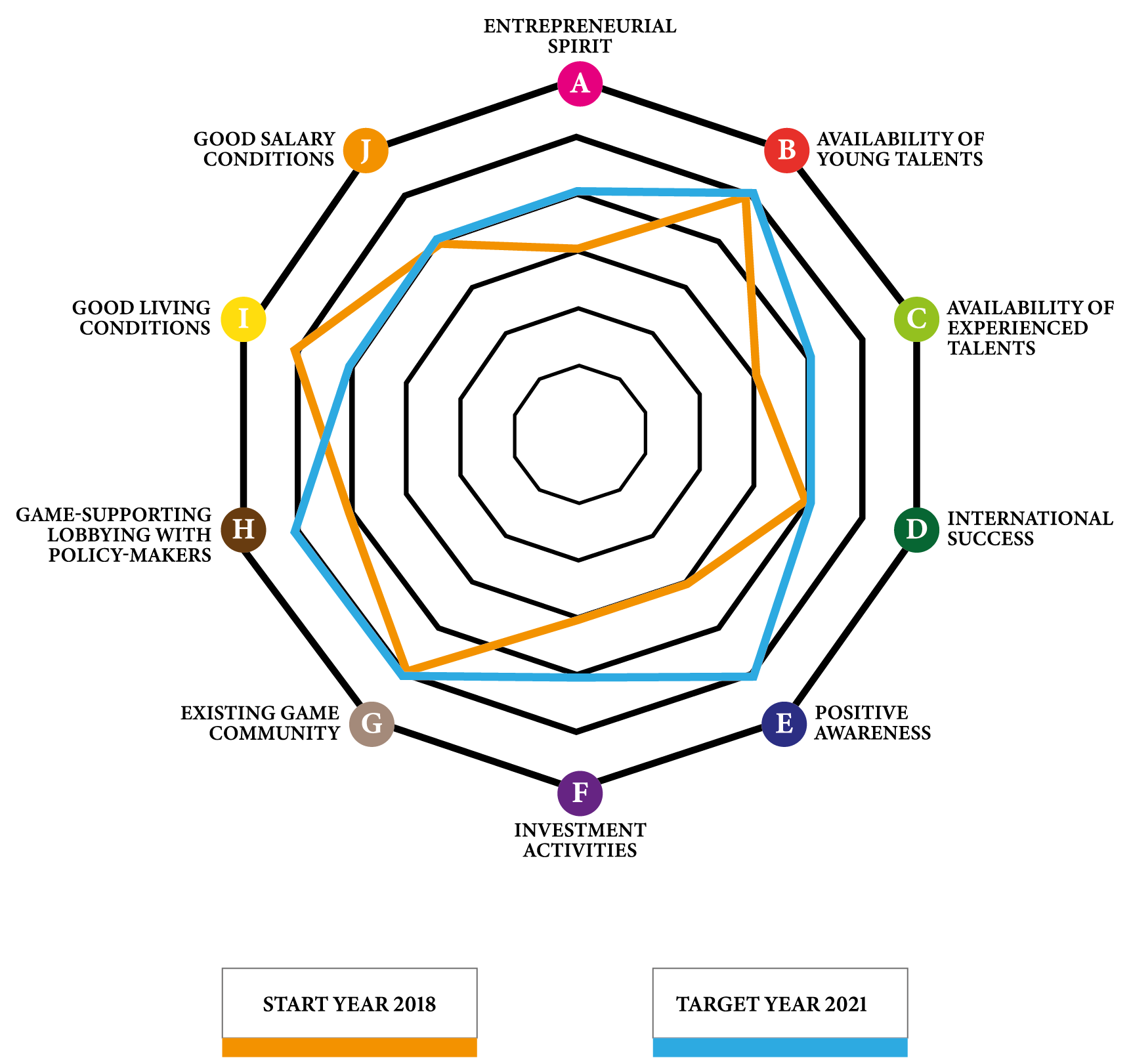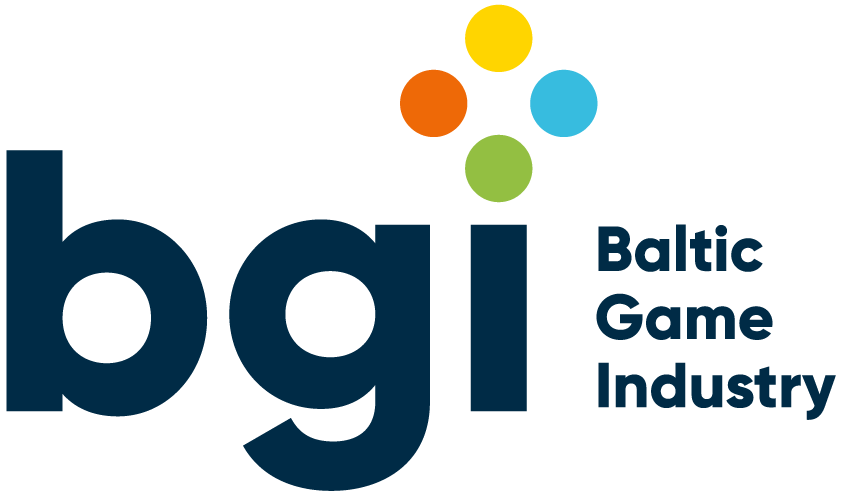Talents, labour market and quality of work Berlin
Berlin-specific statistics
| Unemployment rate: | 9,3 % (2020) |
| Self-employed persons/freelancers: | 11 % (2017) |
| Average salary level for junior designer: | 20-26,000 € p.a. (2017) |
| Average salary for backend programmer: | 24-35,000 € p.a. (2017) |
| Salary for experienced game devs up to: | 55,000 € p.a. (2017) |
| Rate of foreign employees: | 13 % (2017) |
| Trained/graduated staff in the games sector: | 80 % (2017) |
| Games-related study courses and enrolled students: | 25 – 800 (2017) |
| HEI (public and private) and total enrolled students: | 49 + 177,170 (2017) |
| Study fees at public universities: | 250 € p.a. |
| Share of public expenditure for labour market: | 7 % (2018) |
| Share of public expenditure for scientific research: | 1 % (2018) |
Germany-wide statistics
| Labour costs (wage + non-wage costs): | 34.20 € (2017) |
| Usual regular work hours: | 40 hours / week (2018) |
| Minimum contractual leave: | 4 weeks (2018) |
| Gender pay gap: | 21 % (2020) |
Working conditions
Berlin’s salary levels are comparatively low (14.7% below the German median), but this needs to be seen in the context of the relatively low rent and living costs. The Berlin Game Study (published March 2018), states that the average salary for a full-time employed junior game designer lies between the minimum wage (around 1,500 €/month) and 2,000 €/month, for a backend programmer between 2,000 € and 2,700 €. With more than four years of professional experience, one can reach salary levels of up to 4,400 €/month. Of course, this needs to be seen against the backdrop of comparatively low living costs (though rents are increasing rapidly and housing availability is low).
According to the Germany salary atlas of 2018, the highest wages are earned in the states of Hesse, Baden-Württemberg and Bavaria. Berlin is 9th in the ranking of the 16 German states. Thus, a newly graduated person can expect to earn around 43,000 € per annum, while those who have completed vocational training can only expect to earn around 28,000 € per annum.
The gender pay gap in the private sector is approx. 21% in Germany (2020 ), the gap being smaller in the new states and larger in the old states. The average gap in Europe is 17%.
Labour laws are federal laws, so there is no specific Berlin situation to be distinguished from the rest. Most German companies still have a fixed office space/workplace policy, with a full-time week of 40 hours with a minimum of 4 weeks contractual leave (though usually 5-6 weeks in service sectors). Berlin has the fewest state holidays in Germany (6 days fewer than in Bavaria, for example).
Labour market
Labour costs consist of gross earnings and non-wage costs. According to Eurostat, German labour costs rank 7 within the EU in 2017, with an average of 34.20 € (compared to rank 1 – Denmark with 43.60 €). For the non-wage costs, Germany ranked 13 within the EU in 2017, with 28 € to be paid by the employer on top of a gross salary/wage of 100 € (compared to rank 1 – Sweden with 49 € on top of 100 € salary).
The status of a labour market from the point of view of game production can be derived from different indicators. For example:
- The unemployment rate in Berlin was 9,3% in 2020, reflecting a continuous decrease since 2009 (when the rate was 14%). However, the unemployment rate in Berlin is still far above the German average of 5.7%. Of all unemployed people in Berlin, 9,8% are aged 15-25.
- In Germany, freelance and self-employed labour is rather common. In 2017, Berlin had 11% freelancers/self-employed people (a bit higher than the average in Germany of 10%).
- In Germany, the games sector (e.g. compared to the film sector) shows a high percentage of contractual employment (as opposed to freelance employment), with 17% owners, 67% full-time employees, and 10% freelancers, the remainder being trainees and part-time employees.
- Compared to most other German states, Berlin has no lack of available professionals in IT and programming.
- Share of total public expenditure for labour market policy (supporting measure for improving the labour market): 7% (2018)
Internationalisation of the labour market
In total, 13% of the contractual employees are foreigners, 8% of the total are European foreigners, 2% each are from Asia and Turkey respectively, and only 1% are from the US and Australia or from Africa. Foreign nationals make up 17% of Berlin’s population.
Game development education and R&D
The education landscape is a useful indicator of the availability of young talents, while the R&D climate could be attracting senior staff to Berlin.
Game design and game programming are on the upswing all over Germany, but Berlin has a wide range of courses and study programmes on offer.
According to the Berlin Game Study (published March 2018), 80% of all people working in the games industry have either an academic degree or are professionally trained, most of them within a relevant field for the industry.
Berlin offers 25 training or study programmes with a focus on games at 11 universities or private colleges. This includes both study programmes, such as game design or programming, and classes on digital games development within study programmes like media informatics. In Berlin, the highest academic degree that can be earned is a B.A. in game design at the HTW, a public university of applied sciences. They are planning an M.A. course in 2019. There are 500-600 enrolments per year for game-specific university courses, and around 250 for game-specific training. As in general in Germany, technological innovation receives a lot of support. The fact that R&D does not qualify for EU funding may be a factor. Therefore, research is given a lot of support. Public expenditure on scientific research in 2018 was around 300 m €, which constitutes 1 % of the total budget for 2018. Compared to this, as far as figures exist for this category, private investment was comparatively low (also in comparison to the rest of Germany) at 1.628 m €.
Educational levels
Total students in higher education in 2017: 177,170, of which 33,743 (= 19%) were foreign students. Students in higher education constitute 5% of the Berlin population. Median age of students graduating with a bachelor’s degree in Germany was 23.7 in 2016, and 25.9 for those graduating with a master’s degree. 35,367 students started their studies in 2017, and 31,827 graduated (all degree levels, B.A., M.A., PhD etc.) in 2017, of which approx. 22,000 graduated in mathematics, engineering and natural sciences. Of the 49 higher education institutions (public and private) in Berlin, 12 have a strong focus on technology.
The average tuition for studying at a public university is around 250 € p.a. In 2018, the state spent 26% of its total budget on education.
In Germany, English is a mandatory course in secondary schools.
______________________
Status: 2020



